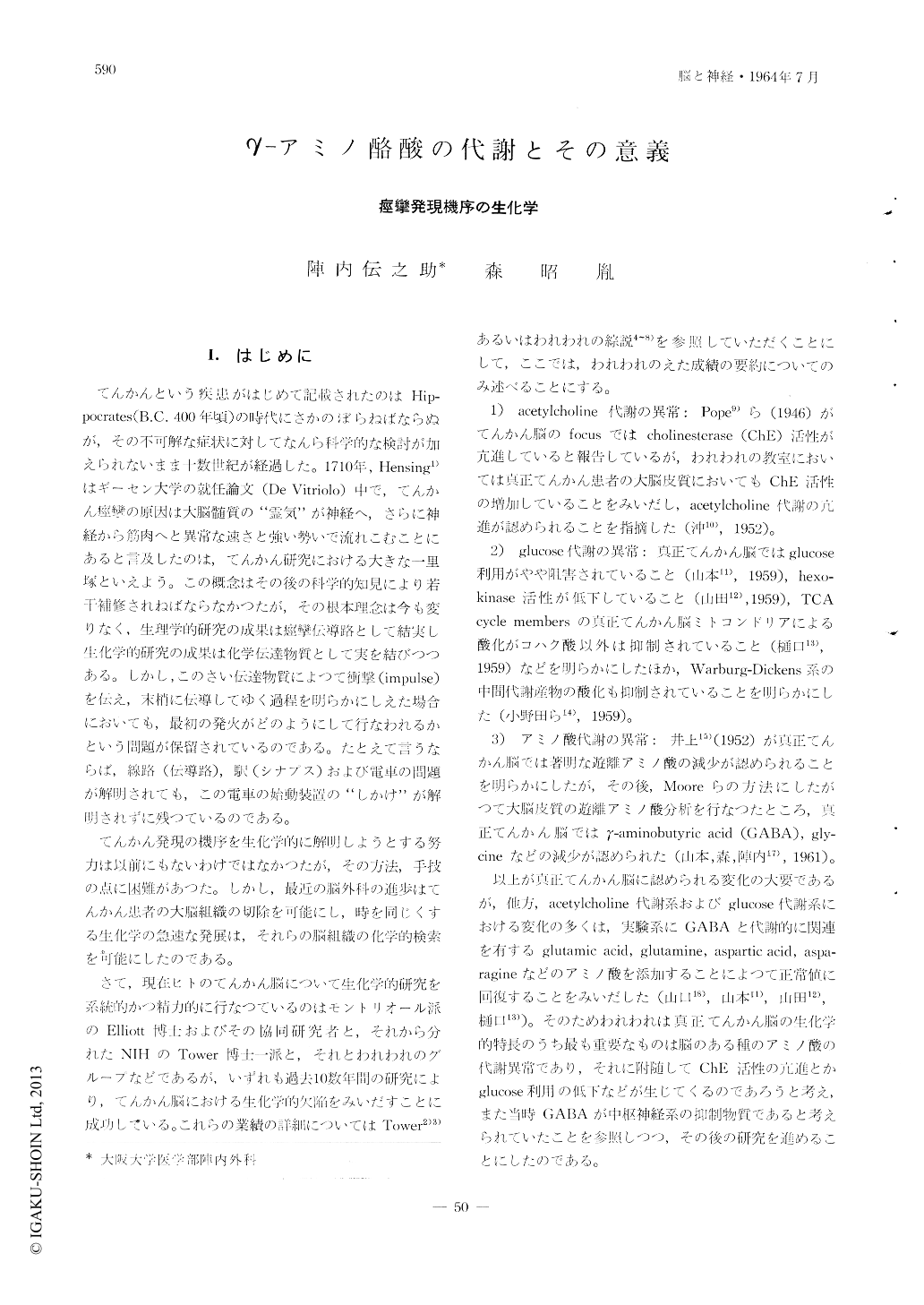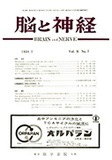Japanese
English
- 有料閲覧
- Abstract 文献概要
- 1ページ目 Look Inside
I.はじめに
てんかんという疾患がはじめて記載されたのはHip—pocrates (B.C. 400年頃)の時代にさかのぼらねばならぬが,その不可解な症状に対してなんら科学的な検討が加えられないまま十数世紀が経過した。1710年,Hensing1)はギーセン大学の就任論文(De Vitriolo)中で,てんかん痙攣の原因は大脳髄質の"霊気"が神経へ,さらに神経から筋肉へと異常な速さと強い勢いで流れこむことにあると言及したのは,てんかん研究における大きな一里塚といえよう。この概念はその後の科学的知見により若干補修されねばならなかつたが,その根本理念は今も変りなく,生理学的研究の成果は痙攣伝導路として結実し生化学的研究の成果は化学伝達物質として実を結びつつある。しかし,このさい伝達物質によつて衝撃(impulse)を伝え,末梢に伝導してゆく過程を明らかにしえた場合においても,最初の発火がどのようにして行なわれるかという問題が保留されているのである。たとえて言うならば,線路(伝導路),駅(シナプス)および電車の問題が解明されても,この電車の始動装置の"しかけ"が解明されずに残つているのである。
てんかん発現の機序を生化学的に解明しようとする努力は以前にもないわけではなかつたが,その方法,手技の点に困難があつた。しかし,最近の脳外科の進歩はてんかん患者の大脳組織の切除を可能にし,時を同じくする生化学の急速な発展は,それらの脳組織の化学的検索を可能にしたのである。
γ-aminobutyric acid (GABA) or γ-amino-β-hydro-xy-butyric acid (GABOB) have been studied as an inhibitory transmitter in the central nervous system for last several years since the discovery of the factor I by Florey (1954).
In this paper studies and discussions on the meta-bolic pathways of GABA were reported concerning with biochemical mechanism of excitation and inhibi-tion in the brain.
1) γ-guanidinobutyric acid displayed considerable excitatory effects in the brain opposite to our initial expectatipn as an inhibitory substance.
2) γ-aminobutyrylcholine showed a marked in-hibitory effect against the convulsion induced by metrazol intravenous injection.
3) Homocarnosine was a marked imhibitory sub-stance against convulsive fit of ep-mouse. Moreover, it could alleviate the seizure of epileptic patients, who were resistant to GABOB by its intrathecal administration.
4) GABA metabolism would phy the most essentiar role in epileptic seizure mechanism, namely derivatives of GABA, especially GABOB, GABA-choline, homocarnosine or γ-guanidinobutyric acid, play important roles as tramsmitters for the metabo-lic process of the epileptic seizure.

Copyright © 1964, Igaku-Shoin Ltd. All rights reserved.


